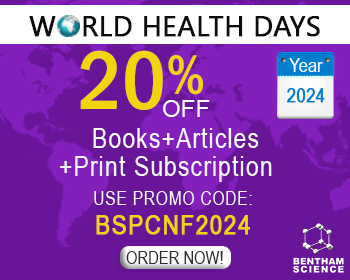Abstract
Cucurbitacins are a wide group of natural products found in several plant families, especially in the Cucurbitaceae family. In the last decade, there has been a significant increase in studies aimed at identifying new biological activities of cucurbitacins and describing their mechanisms of action. The most researched pharmacological activities are antineoplastic and anti-inflammatory activity, the first being recently reviewed. The present review explains the anti-inflammatory, antioxidant, and immunomodulatory potential of cucurbitacins, identifying the most studied compounds in this area and exploring their mechanisms of action already studied. A brief report was made about the main structural characteristics of cucurbitacins, in addition to an update on the biological activities attributed to this class in the last 5 years. Cucurbitacin B and cucurbitacin E have been identified as the most investigated when it comes to the immune response, playing roles in both innate and adaptive immunity. The most cited mechanisms were inhibition of COX-2 and NOS, reduction of oxidative stress, suppression of proinflammatory cytokines and modulation of acquired immunity proteins. It was found that cucurbitacins are promising molecules in the search for therapeutic innovation and have wide versatility in the immune response.
Keywords: Cucurbitacins, cytokines, macrophages, COX-2, cucurbitacin B, cucurbitacin E, NF-κB, lymphocytes.
[http://dx.doi.org/10.4103/0973-7847.156314] [PMID: 26009687]
[http://dx.doi.org/10.29161/PT.v7.i2.2019.43]
[http://dx.doi.org/10.1039/b418841c] [PMID: 16010347]
[PMID: 30329891]
[http://dx.doi.org/10.1002/ptr.2650090302]
[http://dx.doi.org/10.1016/j.bbrc.2007.09.075] [PMID: 17942079]
[http://dx.doi.org/10.1021/np50099a009]
[http://dx.doi.org/10.1021/np50113a015] [PMID: 7853005]
[http://dx.doi.org/10.1248/cpb.42.2370]
[http://dx.doi.org/10.1016/j.phytochem.2007.03.013] [PMID: 17442350]
[http://dx.doi.org/10.1007/BF02491069]
[http://dx.doi.org/10.20944/preprints201908.0127.v1]
[http://dx.doi.org/10.1016/S1572-5995(05)80062-6]
[http://dx.doi.org/10.3389/fpls.2019.01523] [PMID: 31921225]
[http://dx.doi.org/10.1142/S0192415X15500755] [PMID: 26503558]
[http://dx.doi.org/10.1016/0031-9422(88)80031-1]
[http://dx.doi.org/10.1016/0031-9422(82)83102-6]
[http://dx.doi.org/10.1080/14786419.2018.1528592] [PMID: 30450968]
[http://dx.doi.org/10.1248/cpb.49.1377] [PMID: 11605678]
[http://dx.doi.org/10.1016/j.jmgm.2015.11.007] [PMID: 26615469]
[http://dx.doi.org/10.1016/j.abb.2020.108314]
[http://dx.doi.org/10.1055/s-0035-1545695] [PMID: 25760384]
[http://dx.doi.org/10.1016/j.phytol.2015.10.019]
[http://dx.doi.org/10.3390/molecules201018001] [PMID: 26437392]
[http://dx.doi.org/10.1080/10286020.2015.1015999] [PMID: 25761128]
[http://dx.doi.org/10.1016/j.phytol.2016.08.011]
[http://dx.doi.org/10.1080/10286020.2017.1355363] [PMID: 28929786]
[http://dx.doi.org/10.1098/rsos.180723] [PMID: 30225067]
[http://dx.doi.org/10.1038/s41598-019-48365-0] [PMID: 31413307]
[http://dx.doi.org/10.1016/j.fitote.2020.104538]
[http://dx.doi.org/10.1016/j.fitote.2020.104584] [PMID: 32247053]
[http://dx.doi.org/10.1111/cbdd.13160] [PMID: 29250925]
[http://dx.doi.org/10.1155/2019/4517091] [PMID: 31281576]
[http://dx.doi.org/10.1002/jcb.26041] [PMID: 28390176]
[http://dx.doi.org/10.1016/j.sajb.2016.10.001]
[http://dx.doi.org/10.1186/s12906-019-2709-z] [PMID: 31694615]
[http://dx.doi.org/10.1111/jcmm.14514] [PMID: 31257716]
[http://dx.doi.org/10.1016/j.jksus.2020.01.028]
[http://dx.doi.org/10.3389/fphys.2018.01090] [PMID: 30131725]
[http://dx.doi.org/10.1371/journal.pone.0178910] [PMID: 28598969]
[http://dx.doi.org/10.1371/journal.pone.0136236] [PMID: 26296085]
[http://dx.doi.org/10.1097/WNR.0000000000000747] [PMID: 28240721]
[http://dx.doi.org/10.1007/s00044-017-1872-3]
[http://dx.doi.org/10.53388/TMR20190225102]
[http://dx.doi.org/10.2174/0929867325666180514112124] [PMID: 29756563]
[http://dx.doi.org/10.1021/np50057a008] [PMID: 3404148]
[http://dx.doi.org/10.1002/ptr.2650060405]
[http://dx.doi.org/10.1371/journal.pone.0054125] [PMID: 23326583]
[http://dx.doi.org/10.1002/jcp.27411] [PMID: 30341914]
[http://dx.doi.org/10.1016/S0304-3835(02)00497-4] [PMID: 12445672]
[http://dx.doi.org/10.1016/j.lfs.2006.12.021] [PMID: 17286991]
[http://dx.doi.org/10.1016/S0024-3205(03)00602-7] [PMID: 12927589]
[http://dx.doi.org/10.1016/j.fitote.2011.08.002] [PMID: 21871542]
[http://dx.doi.org/10.2174/1389201018666171004144615] [PMID: 28982326]
[http://dx.doi.org/10.1007/s00044-012-0406-2]
[http://dx.doi.org/10.1016/j.lfs.2005.05.103] [PMID: 16253281]
[http://dx.doi.org/10.1080/13880200490512124]
[http://dx.doi.org/10.1124/jpet.103.063693] [PMID: 14752064]
[http://dx.doi.org/10.1124/jpet.106.107003] [PMID: 17065367]
[http://dx.doi.org/10.5897/JMPR10.459]
[http://dx.doi.org/10.1124/jpet.109.159327] [PMID: 19846588]
[http://dx.doi.org/10.1111/j.1476-5381.2010.00856.x] [PMID: 20649584]
[http://dx.doi.org/10.1016/j.intimp.2013.10.003] [PMID: 24140411]
[http://dx.doi.org/10.1371/journal.pone.0089751] [PMID: 24587010]
[http://dx.doi.org/10.1016/j.neulet.2015.10.022] [PMID: 26472707]
[http://dx.doi.org/10.1016/j.bbrc.2015.03.001] [PMID: 25767074]
[http://dx.doi.org/10.3109/08923973.2015.1085065] [PMID: 26466646]
[http://dx.doi.org/10.1093/abbs/gmv030] [PMID: 25921411]
[http://dx.doi.org/10.1016/j.intimp.2015.08.026] [PMID: 26453509]
[http://dx.doi.org/10.1021/acs.jafc.6b00951] [PMID: 27225664]
[http://dx.doi.org/10.1016/j.bbrc.2016.12.085] [PMID: 27988336]
[http://dx.doi.org/10.1016/j.imlet.2018.09.012] [PMID: 30240636]
[http://dx.doi.org/10.1016/j.molimm.2019.09.008] [PMID: 31525576]
[http://dx.doi.org/10.3389/fphar.2019.00321] [PMID: 30984004]
[http://dx.doi.org/10.14202/vetworld.2018.627-635] [PMID: 29915501]
[http://dx.doi.org/10.1089/jir.2019.0085] [PMID: 31755797]
[http://dx.doi.org/10.1007/s00011-013-0598-z] [PMID: 23360962]
[http://dx.doi.org/10.12659/MSM.900523] [PMID: 28315572]
[PMID: 16951543]
[http://dx.doi.org/10.1158/0008-5472.CAN-05-0529] [PMID: 16230418]
[http://dx.doi.org/10.9771/cmbio.v11i1.6245]
[http://dx.doi.org/10.1002/eji.200324549] [PMID: 15114679]
[http://dx.doi.org/10.1016/j.ajpath.2014.09.005] [PMID: 25447055]
[http://dx.doi.org/10.1007/s10875-014-0011-x] [PMID: 24627079]
[http://dx.doi.org/10.1007/s00280-021-04265-7] [PMID: 33825035]
[http://dx.doi.org/10.1089/cbr.2012.1219] [PMID: 22746287]



























